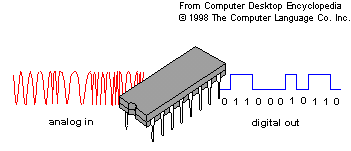A Brief Introduction to Sampling Audio
A Brief Introduction To Sampling Audio
Welcome to the next installment of Tom's Hardware Guide's do-it-yourself digital audio tutorial. The purpose of this article is to tell you all you need to know about sound sampling. The quintessential building block for most songs made in the last 15 years, there is nothing more ubiquitous than the sample. Almost every recent rock, hip hop, R&B, pop, and electronic music track now incorporates the use of samples. Wouldn't you like know how to unleash the potential of this powerful technique?
Sampling refers to digital recording and playback: taking a sound and converting it into 1's and 0's. For more on how this works, see our first article . Technically, any digital recording could be considered a sample. However, the term "sample" generally refers to a smaller piece of sound than say, a whole vocal track.
In practice, sampling is taking a snippet of sound from one source, editing it, and replaying it in a new context. It's all around you. The voice chip of these George Bush action figures, the greeting you recorded for your voice mail, the contents of sound effect libraries, the many modern synthesizers that use "wavetable" synthesis, and so on - samples are everywhere.
Get Tom's Hardware's best news and in-depth reviews, straight to your inbox.
